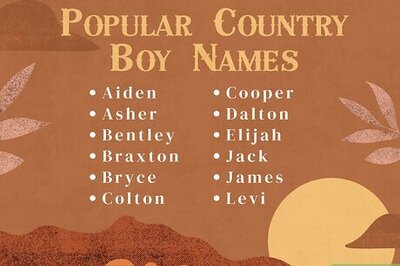
views
With elections in full swing, the term ‘Bahujan’ is back in political discourse and discussions. In Uttar Pradesh, ‘Bahujan’ figures in debates more as a concept and social category, rather than for being in the name of a political party, the Bahujan Samaj Party.
The term originated in Buddhist discourse, which was used by few Dalit ideologues in Maharashtra in the political context and reinvented by Kanshi Ram, founder of the BSP and leader of the Bahujan movement in the 90s. Kanshi Ram visualised Bahujan as a social bloc, which may combine the SCs, OBCs, Muslims, tribal population and also the economically weaker non-Manuvadis from the upper castes. This way, the bloc may constitute 85% of the population of India.
As per Kanshi Ram’s conceptualisation, Bahujans may work to acquire power, which is in the hands of the other 15 per cent – the rich, landlords, Manuvadi upper caste and capitalist class of the society.
Kanshi Ram also came up with the slogan ‘Bahujan Maange Sau Mein 85’ (Bahujans demand 85% power and resources), inspired by the Bahujan movement of Ram Manohar Lohia who coined ‘Pichhada Maange Sau Mein Sath’ during his socialist struggle. At the time, he was involved in mobilising OBC communities into the political fold. Kanshi Ram drew from Lohiya’s socialist movement while giving shape to his Bahujan movement.
Unfortunately, the rivalry between Mulayam Singh Yadav and Mayawati broke the SC-OBC political mobilisation, dealing a blow to Kanshi Ram’s dream of seeing the Bahujans as one social bloc. With the SP and BSP joining hands for the general elections, this dream has got a new lease of life.
Mayawati has been appealing in various rallies for unity among various Bahujan communities. She replied to Yogi Adityanath’s ‘Ali versus Bajrang Bali’ comment, saying: “Both are ours and we need both. Bajrang Bali comes from the Dalit vanchit communities.”
She countered BJP’s alleged attempts at polarisation, saying that followers of Ali mean Muslims and Bajrang Bali’s followers include Dalits, tribal people, OBCs and others, who are also part of the Bahujan community.
She tried to forge a Dalit-Muslim alliance before the election and also worked on a social engineering formula called ‘Sarvajan Politics’. SP chief Akhilesh Yadav seems to be enthusiastic about the concept of Bahujans and is trying to apply it on the ground. He wants to send the massage to Dalit communities that he is quite concerned about them and other marginalised sections.
He is appealing to OBCs and Bahujans to come together for maha parivartan (mega transformation). He understands that crackling chemistry is needed between these two communities to transfer SC and OBC votes between the two blocs. Yadav also seems keen on resolving various contradictions between these two communities through his political gestures. He invokes BR Ambedkar and Kanshi Ram to forge his own relationship with Dalit communities. In several speeches, he has painted Ram Manohar Lohiya as a co-traveller of Ambedkar.
In making Bahujans a social bloc, Muslims have emerged as a crucial community. The SP-BSP alliance needs to convince Muslim voters of its politics and take them along in long-term Bahujan politics.
The 2019 test is whether the Bahujans can emerge as an electorally cohesive community, combining more than 70 communities.
(Badri Narayan is a Social Scientist at GB Pant Social Science Institute in Allahabad. Views are personal.)



















Comments
0 comment